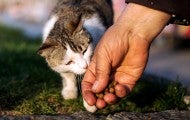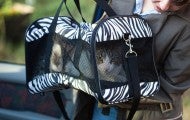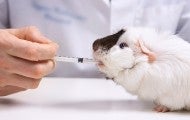Millions of people are at home now in the midst of a pandemic, disinfecting and cleaning, taking cold and flu medications—with the potential they might unwittingly poison their pets. The cleaning products consumers have carried home from stores, stripping shelves bare, can kill the virus that causes...
NEW YORK—Today, animal welfare groups commended Gov. Kathy Hochul for signing the Puppy Mill Pipeline Bill, groundbreaking legislation that will stop the flow of cruelly bred puppies to New York pet stores by ending the retail sale of dogs, cats and rabbits in pet stores across the state. Championed...
Do your homework So you’ve decided to add a new pet to your family. First, you should answer some questions: What kind of pet will be the best fit for your household? Do you have enough time to devote to the daily needs of a dog? Is there someone in your household who is allergic? What about a non...
The choice to spay or neuter your pet may be one of the most important decisions you make impacting their long-term health—and your wallet! Your pet's health and longevity The average lifespan of spayed and neutered cats and dogs is demonstrably longer than the lifespan of those not. A University of...
If you spot a coyote in your neighborhood, relax: Most coyotes avoid people. “Seeing a coyote out during the day is not a cause for alarm, especially in the spring and summer when they’re out looking for food for their pups,” says Lynsey White, HSUS director of humane wildlife conflict resolution...
When making travel decisions, choose what is safest and most comfortable for your pet. For instance, unless you'll be able to spend a lot of time with your dog, they'll probably be happier at home than tagging along on your trip. As a rule, cats are almost always better off in their own home. But if...
Pets get into everything and, like babies, tend to explore the world with their mouths. Make sure they stay safe by checking your home and yard for plants that could cause an emergency vet visit. It's also important to familiarize yourself with what table scraps are OK to share and which to avoid...
It's common to see baby wild animals outside during spring as a new generation makes its way into the world. Sometimes you’ll even see these babies alone, with no parent in sight. For animal lovers, the instinct to help can be difficult to ignore. But unless the animal is truly orphaned or injured...
As the year comes to an end, animal advocates celebrate the passage of three new animal protection ordinances and resolutions in Montclair. Most notably, Montclair prohibited the retail sale of dogs and cats in pet stores. Montclair joins 136 municipalities in New Jersey that have enacted humane pet...
Teddy was never meant to have a name. He was born a number, just one of tens of thousands of dogs—mostly beagles like him, chosen for their trusting, docile nature and compact size—bred in the United States for use in experiments each year. Teddy was meant to live and die in a laboratory, without...
Coyotes go out of their way to stay out of ours: They’re partial to open areas but seek hiding places in cities. They’re naturally active in daylight but adopt nocturnal lifestyles when living near humans. They can follow traffic signals and cross roads after rush hour. They even try to “escort” dog...
Somewhere toward the end of the last ice age, we formed an alliance with wolves: Maybe the ancestors of dogs got food scraps while our own ancestors gained protection from predators and other humans. These social species eventually collaborated on a vast scale, possibly even hunting woolly mammoths...
Every day, more and more wildlife habitat is lost to the spread of development. Give a little back by building your own humane backyard! It doesn't matter whether you have a small apartment balcony, a townhouse with a sliver of ground, a suburban yard, a sprawling corporate property or a community...
Contents How many animals are used in experiments each year? Which animals are used in experiments? What kinds of experiments are animals used in? What kinds of institutions use animals in experiments? Where do laboratories get the animals they use in experiments? What is life like for animals in...















